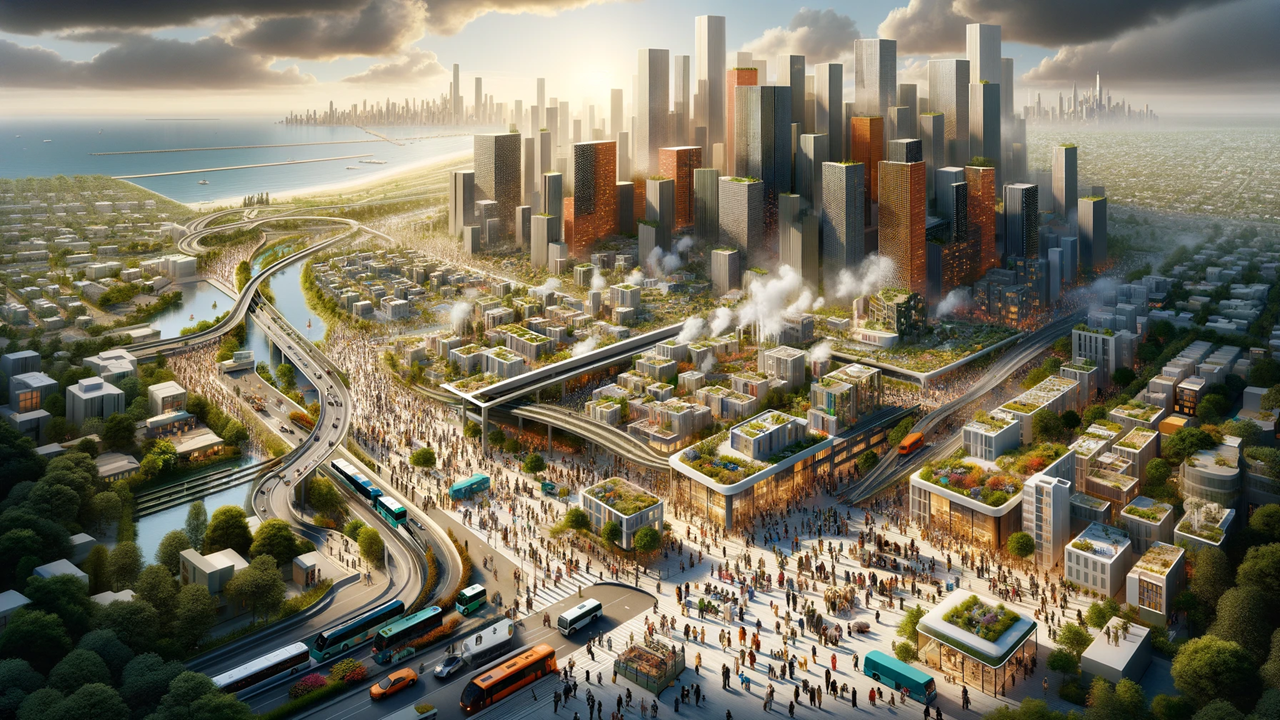Climate Migration and Its Impact on Urban Centers
This article explores the impact of climate migration on urban centers, highlighting the roles of technological advancements and workforce mobility in shaping new urban dynamics. It discusses how cities can manage population influxes sustainably and inclusively, facilitated by technology and strategic planning.

In the face of escalating climate change, urban centers around the world are experiencing significant shifts in population dynamics, with technological advancements playing a crucial role in how these shifts unfold. The concept of "cloud coders" and the increasingly mobile workforce are central to understanding these changes. This article, titled "Shifting Sands: Climate Migration and Its Impact on Urban Centers," delves into recent research analyzing how climate change and technology are reshaping global migration patterns and the consequent effects on urban areas.
Understanding Climate Migration
Climate migration refers to the movement of people induced by climate change impacts such as increased frequency of extreme weather events, sea-level rise, and prolonged droughts. These environmental stressors compel populations to move from affected regions to more stable urban centers, seeking safety and continuity.
Technological Advancements and Workforce Mobility
Parallel to environmental changes, technological advancements have liberated many professionals from traditional office-bound roles. The rise of "cloud coders" — software developers and IT professionals who can work remotely via cloud-based platforms — epitomizes this shift. This mobility allows individuals to relocate without losing employment, contributing to an evolving migration pattern where choices are influenced as much by lifestyle and environmental concerns as by economic opportunities.
Impact on Urban Centers
Urban centers are on the front lines of dealing with both the challenges and opportunities presented by climate migration:
- Population Growth Management: Cities are having to adapt rapidly to the influx of new residents. This requires expansion and enhancement of infrastructure, housing, and services to accommodate growing populations without straining existing resources.
- Economic Integration: Newcomers, particularly those with adaptable, tech-oriented skills like cloud coding, can inject vitality and innovation into local economies. However, this also requires updating educational and training programs to bridge any skill gaps and maximize the contributions of all residents.
- Social and Cultural Integration: With increasing diversity resulting from migration, urban centers must foster inclusive communities to ensure social cohesion. This involves promoting cultural exchange, addressing xenophobia, and ensuring equitable access to resources.
Role of Technology in Supporting Migrants
Technology not only facilitates the mobility of the workforce but also supports migrants in various critical ways:
- Information Access: Migrants can access crucial information about destination cities, including legal assistance, housing options, and community resources, all facilitated by mobile apps and online platforms.
- Remote Employment Opportunities: The ability to work remotely allows individuals to secure and commence employment before relocating, reducing the economic uncertainty associated with migration.
- Community Building: Online platforms can help migrants connect with local communities and networks, easing the integration process.
Challenges and Policy Implications
The increasing trend of climate migration poses several challenges for urban planners and policymakers:
- Infrastructure Strain: Cities must plan for scalable and sustainable infrastructure development to prevent overcrowding and depletion of resources.
- Economic Disparities: Ensuring that economic benefits of an increasing population are distributed equitably to prevent widening social and economic divides.
- Regulatory Frameworks: Updating immigration and labor laws to reflect the realities of climate migration and the needs of a technologically enabled mobile workforce.
Future Directions
Looking forward, cities must consider proactive and innovative strategies to handle the expected increase in climate migration:
- Sustainability Planning: Urban development plans must incorporate sustainability to manage the environmental impacts of expanding urban populations.
- Enhanced Connectivity: Improving digital infrastructure to support remote work and integrate technology into all aspects of city management.
- Global Collaboration: Cities can benefit from sharing strategies and innovations to manage the effects of climate migration effectively.
Conclusion
As climate change continues to influence migration patterns, urban centers must adapt to these new realities by leveraging technology and revising policy frameworks. The interplay between environmental factors and technological advancements offers both challenges and opportunities to reshape urban living into a more sustainable, inclusive, and dynamic form.










